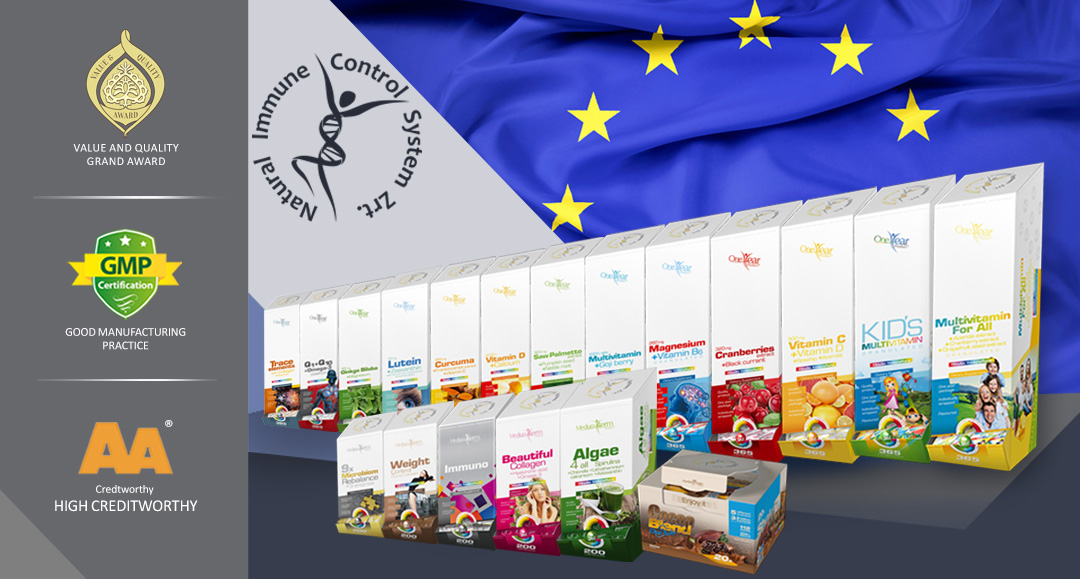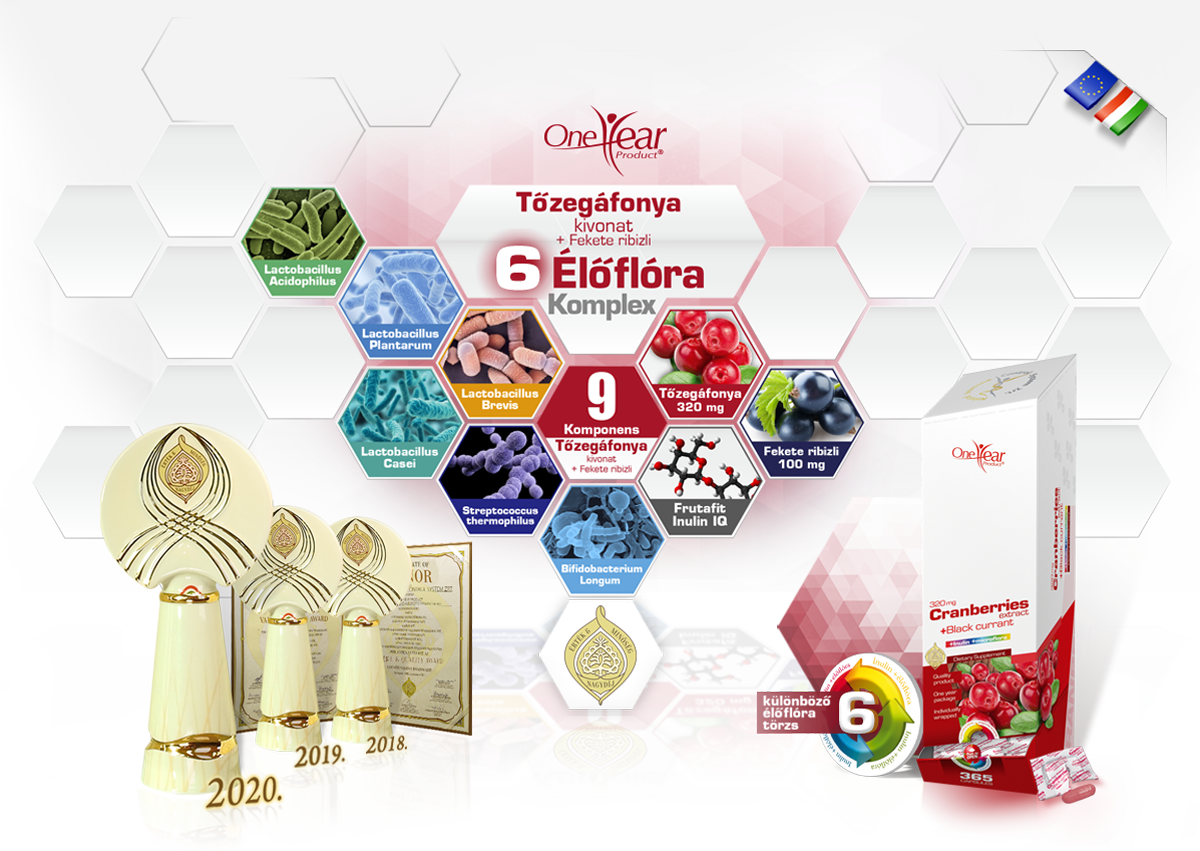|




|
Az itt látott étrend-kiegészítő megkapta az Érték és Minőség Nagydíjat.
Ezzel együtt már 23 termékünk érdemelte ki ezt a megtisztelő védjegyet, amely garancia
a minőségre valamint arra, hogy a lehető legjobb étrend-kiegészítőt használja egészsége
megőrzése érdekében.
|

|
|
Természetben előfordulva a tőzegáfonya
|
|
A tőzegáfonya egy Észak-Amerikában őshonos növény gyümölcse. Sötétpiros bogyói egész télen át díszítenek. A tőzegáfonya azonos növénycsaládba tartozik a vörös áfonyával és a fekete áfonyával.
Az áfonyát jellegzetes illatáért, frissítő ízéért már sokkal előbb fogyasztották minthogy gondoltak volna jótékony hatására. Feltehetőleg 1621-ben a zarándokok hálaadó ünnepen fogyasztották először az áfonyát, de az áfonyaszósz csak a polgárháború után vált nemzeti tradícióvá. Ulysses S. Grant kapitány az áfonyaszószt a hálaadás fontos részének tartotta. A Petersburg elleni csata alatt, 1864-ben elrendelte, hogy az Unió csapatainak áfonyát adjanak. A katonák a számukra eddig ismeretlen gyümölcsöt megszerették és fogyasztása szokássá vált. A telepesek nem tudtak az áfonya magas C-vitamin tartalmáról, de az angliai tengerészek között népszerűvé vált, mert akik ezt fogyasztották azoknál nem alakult ki skorbut. A XXI. század kezdetétől a tőzegáfonya használata egyre inkább elterjedt, és az elmúlt években igen népszerűvé vált. Az áfonyák bogyóját nyersen, szárítva, lekvárként, lisztté őrölve és mártásként fogyasztják.

|
|
Természetben előfordulva a fekete ribizli levél
|
|
Hazánkban szórványosan előforduló védett növény, melyet kultúrában főleg gyümölcséért termesztenek. A fekete ribizli a ribiszkefélék családba tartozik. Fürtjei kisebbek és sokkal lazábbak piros rokonánál. Levelei flavonoidokat tartalmaznak.


Ez a One Year Product termék hatféle élőflórát tartalmaz emelt csíraszámban, továbbá a hatékonyságot növelő Inulint.
Inulin és élőflóra
Az élőflórát olyan jótékony, élő mikroorganizmusok alkotják, melyek a tápcsatornában a savas közeget is túlélve segítik a bélflóra egészséges egyensúlyának fenntartását. Termékeink magas csíraszámban tartalmaznak több élőflórát és a szaporodásukat elősegítő Inulint. A Probiotikum más néven élőflóra kifejezés görög eredetű, jelentése: az életért. A mai értelemben R. B. Parker alkalmazta először a probiotikum kifejezést 1974-ben, mint azokat az organizmusokat és anyagokat, amelyek a bélrendszer mikroba-egyensúlyáért felelősek. A probiotikumok jellemzői, hogy emberi eredetűek, nem kórokozók, ellenállnak a gyomorsav, az epe, valamint a nyál, a hasnyálmirigy és a bélnedvek emésztő enzimei hatásának. Az élelmiszerek szavatossági idejének tartalma alatt és a technológiai folyamatok során megőrzik ellenállóképességüket. Ezen kívül a probiotikumok képesek a nyálkahártyák sejtjeihez tapadni, a potenciális kórokozók ellen antimikrobás hatást fejtenek ki, csökkentik a kórokozó mikrobák megtapadását a nyálkahártya felszínén. A probiotikumok legnagyobb részben tejsavbaktériumok és bifidobaktériumok. A legismertebb probiotikus tejsavbaktérium-törzsek többsége a Lactobacillus, kisebb része a Streptococcus nemzetséghez tartozik. Prebiotikumoknak nevezzük azokat a természetes tápanyagokat, amelyek jellemzően a probiotikumok kizárólagos tápanyagai, ezért elősegítik azok elszaporodását és túlsúlyba kerülését. A szájüregben, illetve a gyomor-bélcsatornában az emésztőenzimek nem bontják le a prebiotikumokat, így emésztetlenül juthatnak a vastagbélbe. A prebiotikumok diétás rostok, de vízben oldhatók, ezért a diétás rostok közül is a legkiválóbbak. Élelmi rost funkciójuk mellett igazi hasznosságuk abban rejlik, hogy a probiotikumok kizárólagos táplálékai. Mivel a vastagbélben már kevés az emészthető táplálék, vagyis ott relatív táplálékhiány van, az elfogyasztott prebiotikumok lehetőséget kínálnak a humánbarát bélbaktériumok elszaporodására. Természetes állapotukban sok élelmiszerben előfordulnak, pl: csicsóka, cikóriagyökér, vöröshagyma, fokhagyma, póréhagyma, articsóka, teljes értékű gabonamagvak, búza, banán, len, spenót, káposztafélék, mangold, mustárfélék, bogyós gyümölcsök, hüvelyesek, tej és az érett sajtok többsége. A prebiotikumok egyik fajtája az Inulinok, tulajdonképpen egy diétás rost, mely emésztetlenül jut el a vastagbélbe, fokozzák a probiotikumok szaporodását, túlsúlyba kerülésüket. Szerepük: emésztés, bélflóra egyensúlya
A szervezetünk legnagyobb felszínnel rendelkező, mintegy 7-9 méter hosszúságú bélrendszerünkön keresztül áll kapcsolatban a külvilággal. Így potenciális támadási helyként szolgál a kórokozók és a toxikus anyagok számára. A bélben normális körülmények között mintegy 200-400 baktériumtörzs található. A magzati életben a jótékony baktériumok 95-98%-ban vannak túlsúlyban. Az egészséges bélflóra védelmet biztosít számos kórokozóval szemben, biztosítja a bélnyálkahártya épségét és segíti a szervezet számára szükséges tápanyagok felszívódását. Számos, a szervezet számára nélkülözhetetlen vitamint termelnek. Ha az emésztőrendszer védelmi mechanizmusai gyengülnek, az többek között felszívódási folyamatok zavarát okozhatja. A probiotikumok ahhoz, hogy képesek legyenek környezetükre hatást gyakorolni, a nagyszámú jelenlét alapfeltétel, mely a bélfolyadékban grammonként legalább 108 c.f.u. organizmust jelent. | Mit jelent a c.f.u. kifejezés? c.f.u.: kolóniaképző egység milliliterenként, az életképes mikroorganizmusok száma (csíraszám). A készítményekben általában ilyen egységben adják meg a baktériumok mennyiségét. Az Inulint azonban mg-ban határozzák meg. Megfelelő dózisnak a minimum 109 c.f.u. az elfogadott. | |
| Milyen a hatékony élőflórás készítmény? - | A probiotikumok szaporodását a prebiotikumok elősegítik, ezért tartalmazzon a készítmény Inulint vagy frukto-oligoszacharidákat. | | - | Ellenállnak a gyomorsav, az epe, illetve az emésztőenzimek hatásainak, így élve el tudnak jutni a hasznos baktériumok a vastagbélbe, ahol képesek elszaporodni és megtapadni. Alapvető kritérium, hogy a baktériumok megtartsák életképességüket a gyomor-bélrendszerben történő áthaladásuk során. | | - | A jó élőflórás készítmények minimum 5-6 törzset tartalmaznak, hiszen a bélbaktériumok sokrétű multikultúráját kívánjuk pótolni. | | - | Szavatossági idő alatt és a technológiai folyamatok során megőrzik ellenálló képességüket. | | - | Megfelelő mennyiségű csíraszámot tartalmaz, szakemberek által javasolt
minimum 108 vagy 109 telepképző egység. |
| |
|